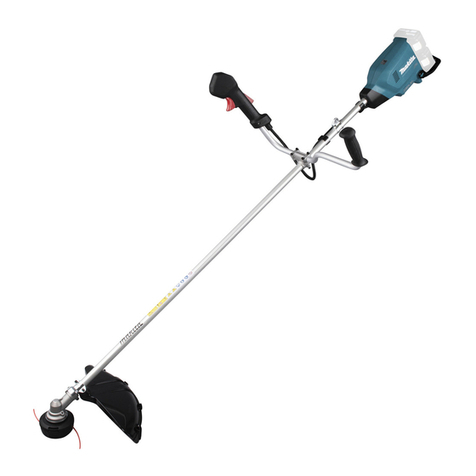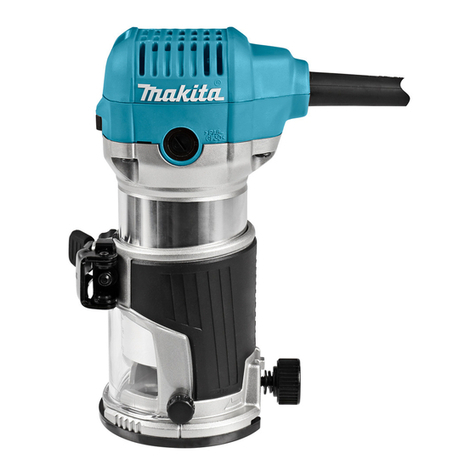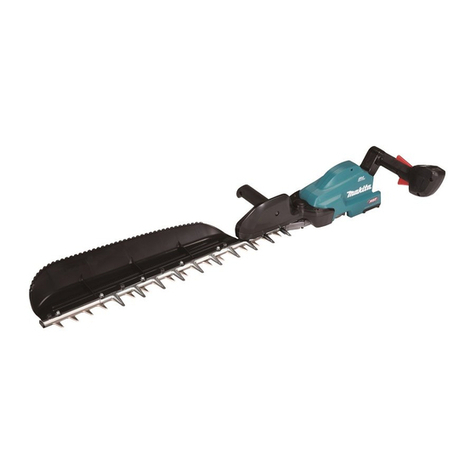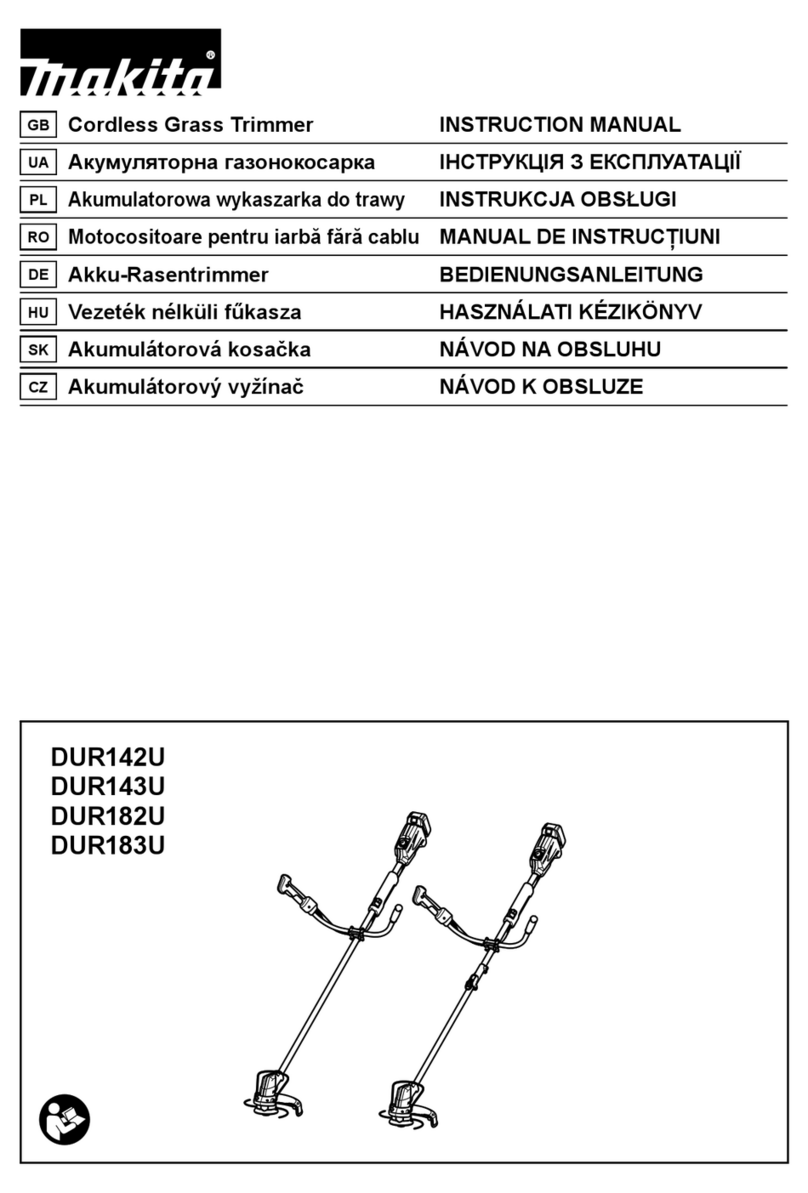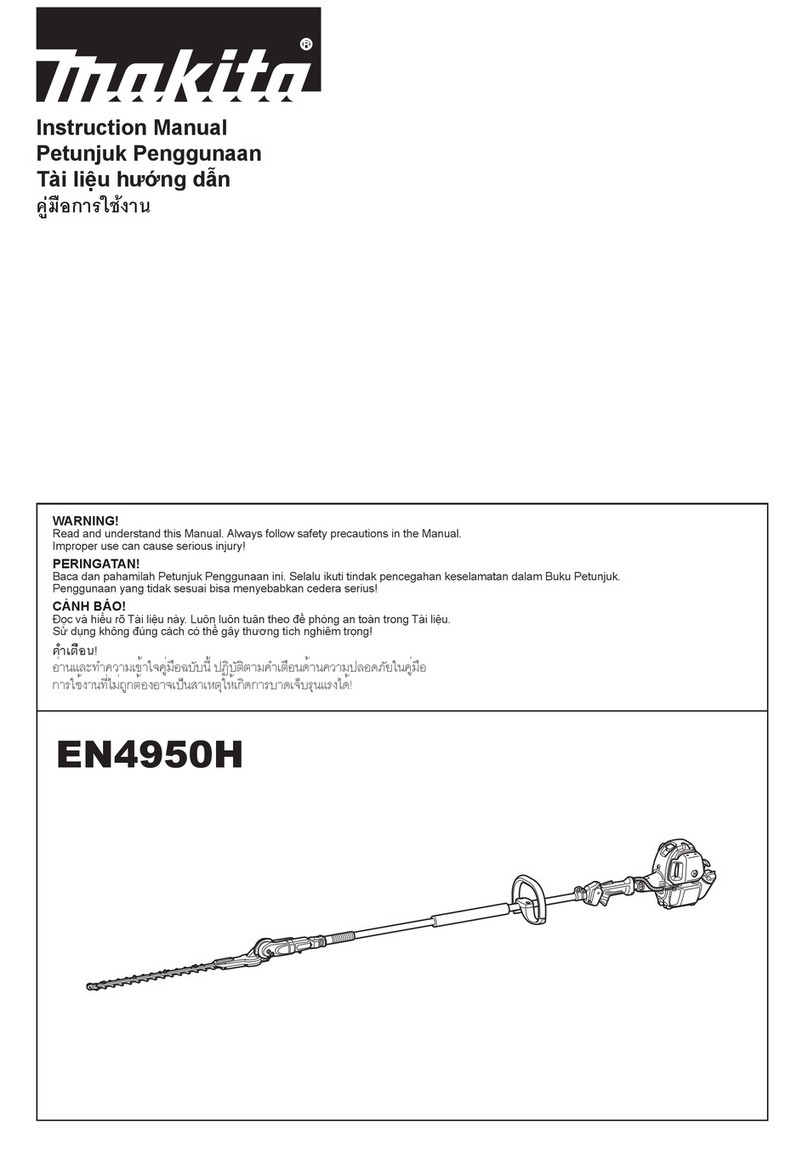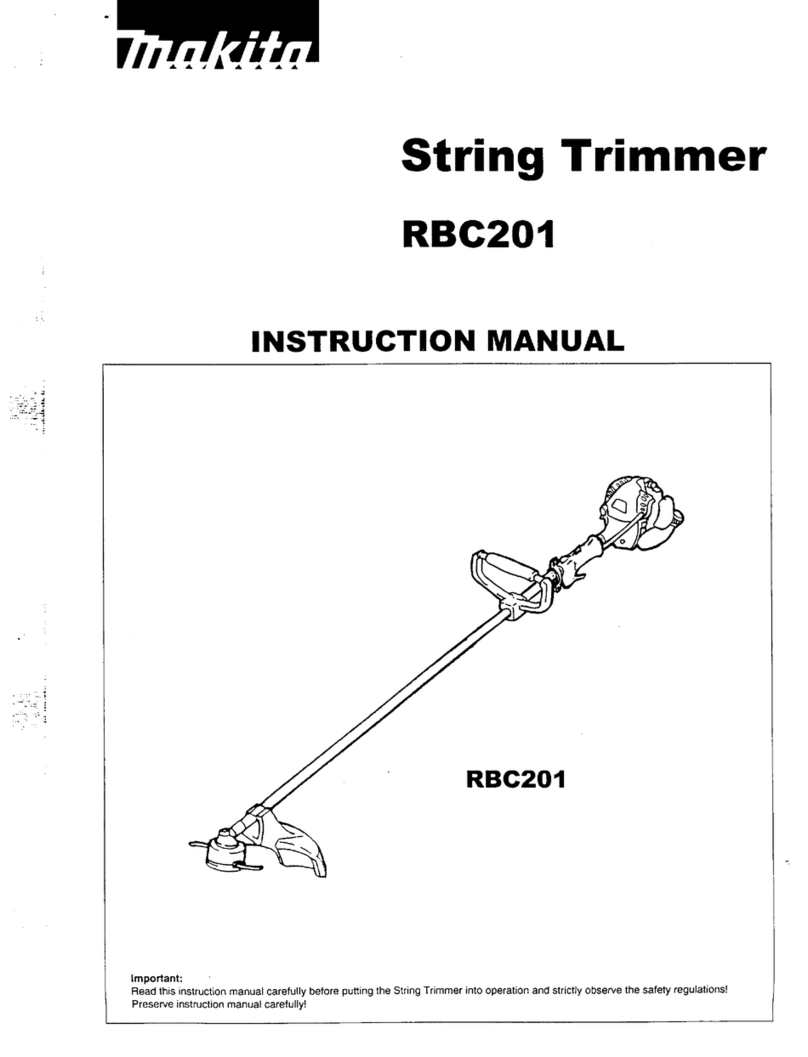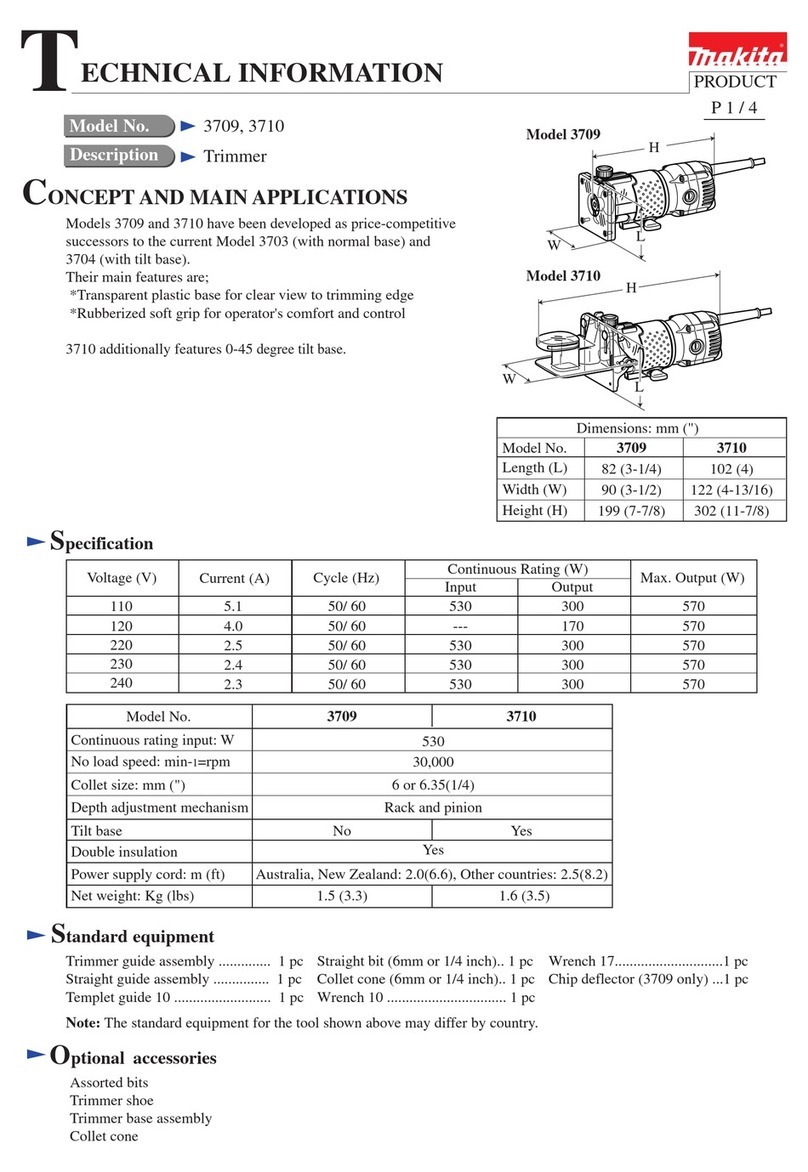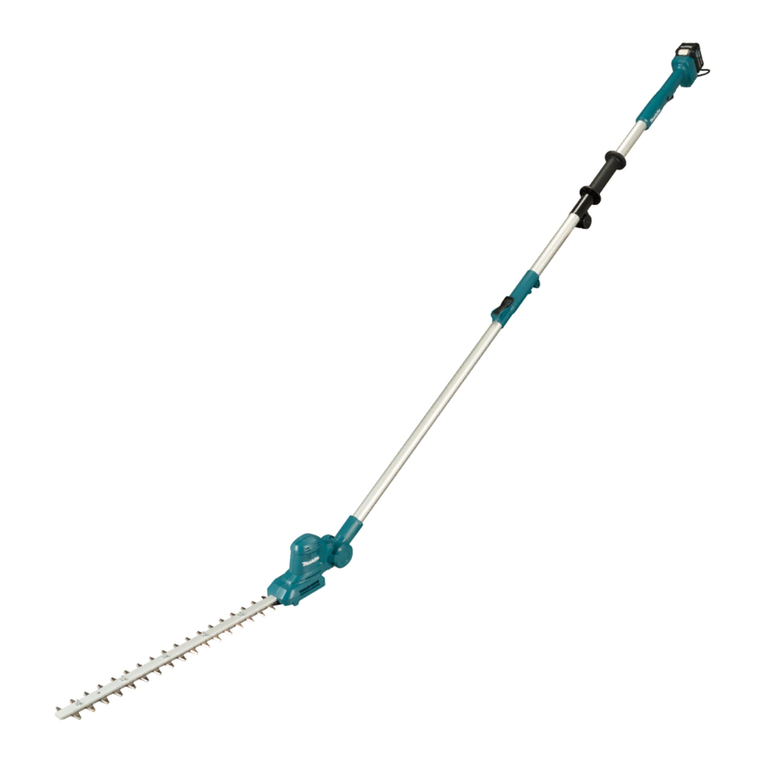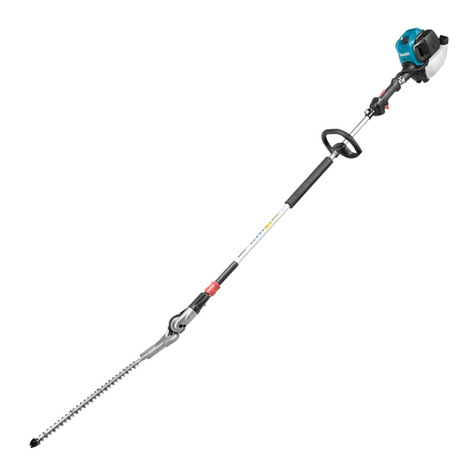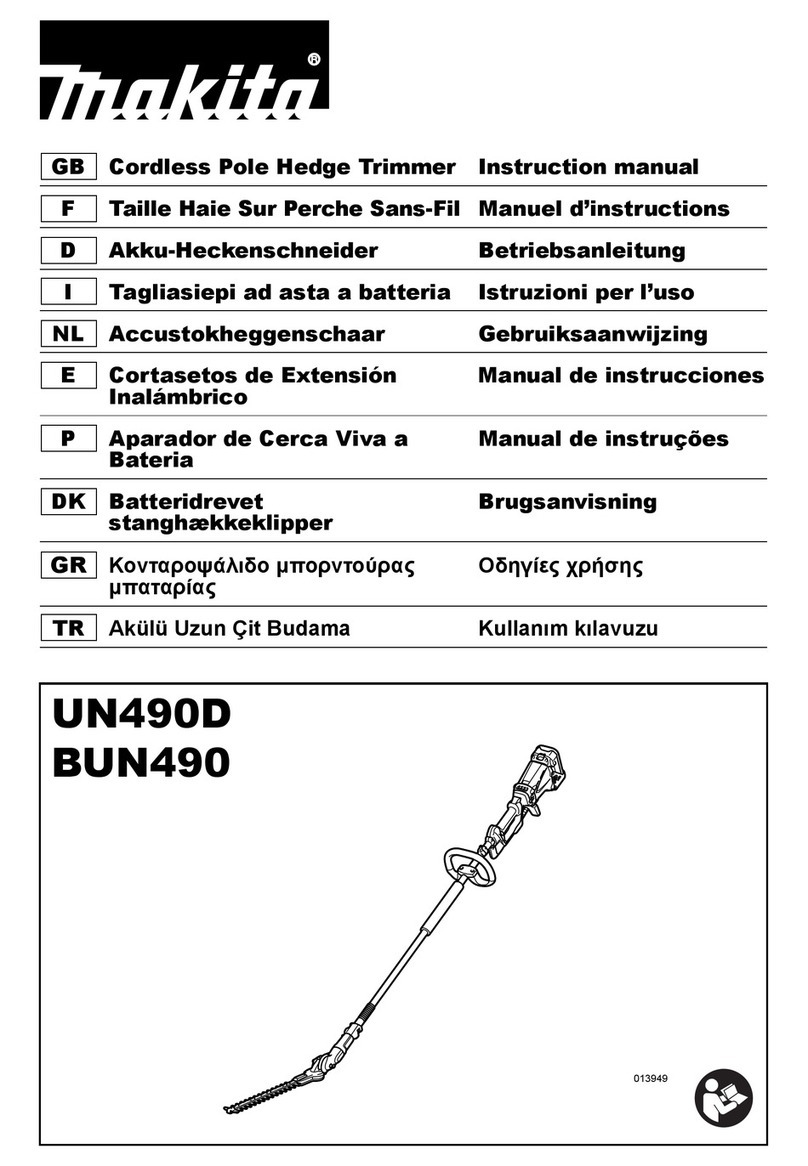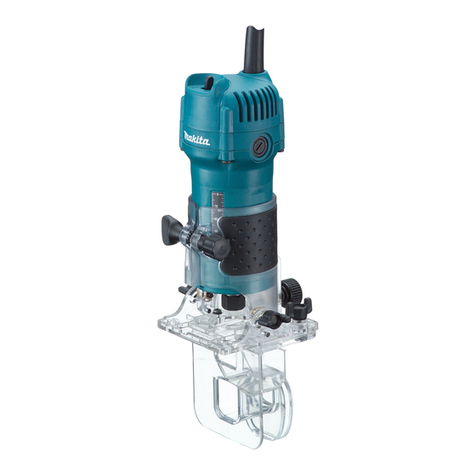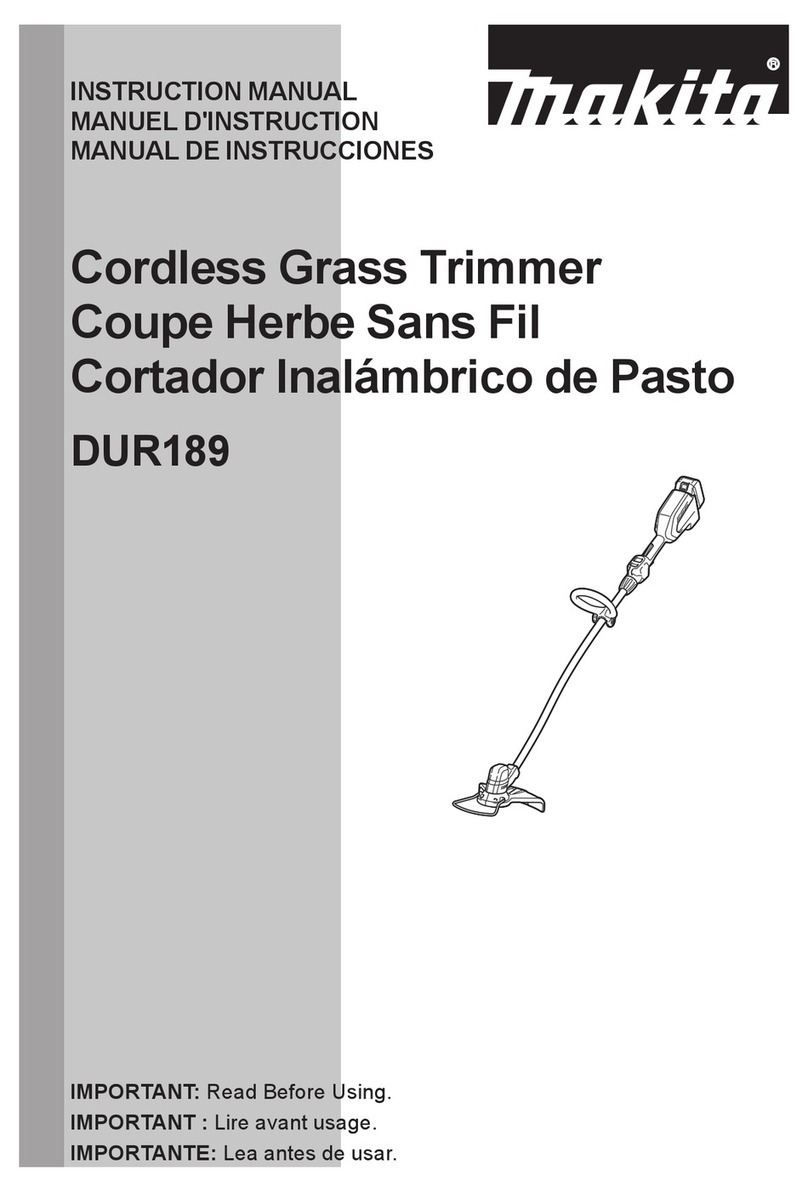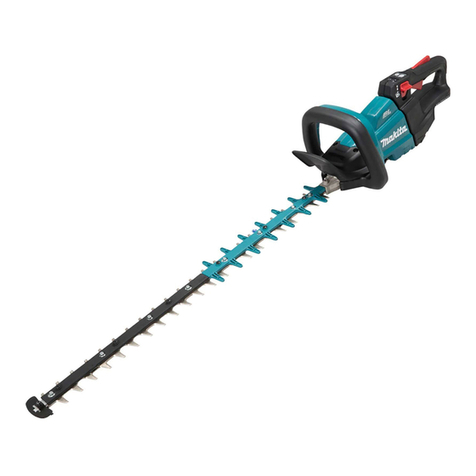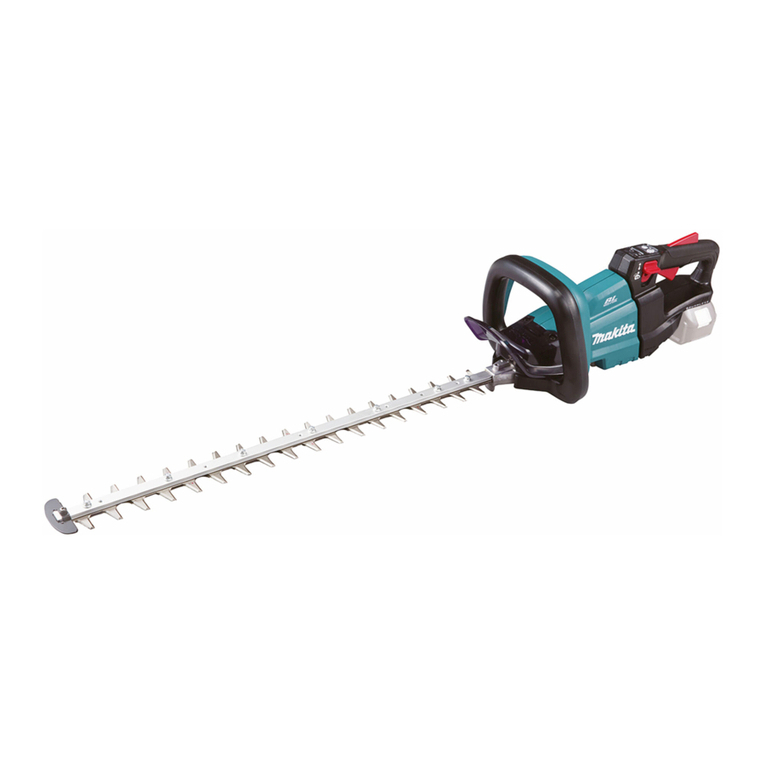
10 ENGLISH
ENGLISH (Original instructions)
SPECIFICATIONS
Model: DUR194
Type of handle Loop handle
No load speed 2: 6,000 min-1
1: 4,500 min-1
Overall length
(without cutting tool)
1,580 mm
Nylon cord diameter 2.0 mm
Applicable cutting tool and
cutting diameter
8-tooth blade
(P/N 191Y44-2)
200 mm
Nylon cutting head
(P/N 198893-8, 191D89-4)
280 mm
Plastic blade
(P/N 191Y45-0)
230 mm
Rated voltage D.C. 18 V
Net weight 2.6 - 2.9 kg
• Duetoourcontinuingprogramofresearchanddevelopment,thespecicationshereinaresubjecttochange
without notice.
• Specicationsmaydierfromcountrytocountry.
• Theweightmaydierdependingontheattachment(s),includingthebatterycartridge.Thelightestandheavi-
est combination, according to EPTA-Procedure 01/2014, are shown in the table.
Applicable battery cartridge and charger
Battery cartridge BL1815N / BL1820B / BL1830B / BL1840B / BL1850B / BL1860B
Charger DC18RC / DC18RD / DC18RE / DC18SD / DC18SE / DC18SF /
DC18SH / DC18WC
•
Some of the battery cartridges and chargers listed above may not be available depending on your region of residence.
WARNING: Only use the battery cartridges and chargers listed above. Use of any other battery cartridges
andchargersmaycauseinjuryand/orre.
Recommended cord connected power source
Portable power pack PDC01
• The cord connected power source(s) listed above may not be available depending on your region of residence.
• Before using the cord connected power source, read instruction and cautionary markings on them.
Noise
Cutting tool Sound pressure level
(LpA) dB(A)
Sound power level (LWA)
dB(A)
Applicable
standard
LpA dB(A) Uncer-
tainty (K)
dB(A)
LWA dB(A) Uncer-
tainty (K)
dB(A)
8-tooth blade 73.5 2.9 88.6 2.9
ISO22868
(ISO11806-1)
Nylon cutting head 72.6 2.6 85.3 3.0
ISO22868
(ISO11806-1)/
EN50636-2-91
Plastic blade 75.8 0.7 86.2 2.5
ISO22868
(ISO11806-1)/
EN50636-2-91
• Even if the sound pressure level listed above is 80 dB (A) or less, the level under working may exceed 80 dB
(A). Wear ear protection.

